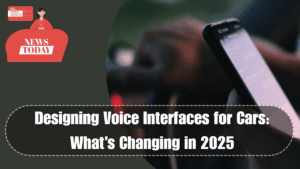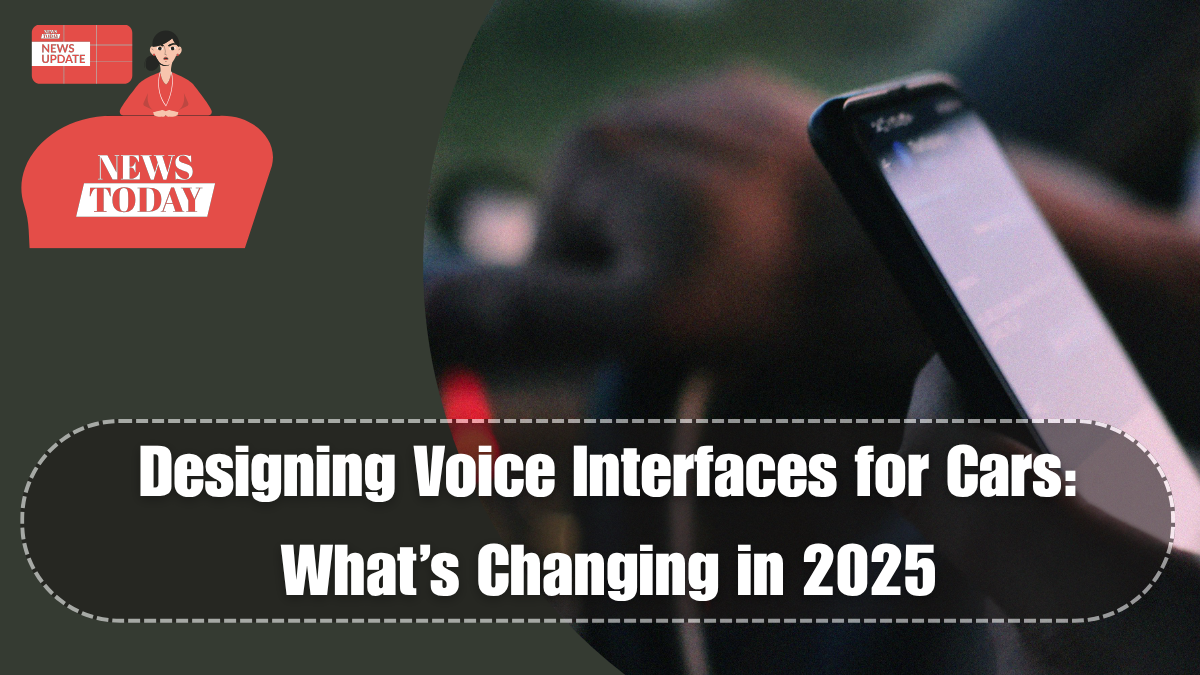The voice interface in vehicles has taken a revolutionary leap forward in 2025, evolving from basic command-based systems to intelligent conversational assistants. With safety, accessibility, and personalization as top priorities, automakers are embracing conversational design to reimagine how drivers interact with cars. Gone are the days of clunky voice commands—today’s systems understand natural speech, context, and intent.
From hands-free climate control to complex navigation queries, vehicle voice UI is becoming the centerpiece of the modern auto experience. This shift isn’t just about convenience—it’s about redefining driving through intelligent interaction.

Natural Conversation Is the Future of Auto UX
Thanks to AI advancements, the voice interface in vehicles now enables users to speak naturally instead of learning robotic commands. Drivers can ask questions like “Where’s the closest petrol station with good reviews?” or say “I’m cold” to trigger automatic climate adjustments. These interactions are powered by large language models integrated directly into vehicle systems.
Leading features in 2025 voice interfaces include:
-
Context-aware commands based on location, time, and driving conditions
-
Multi-language support tailored to global users
-
Emotion detection to adapt responses based on user tone
-
Seamless switching between touch and voice control
All of these enhancements contribute to a smooth and distraction-free driving experience powered by auto UX evolution.
Role of Voice Assistants in Enhancing Driver Safety
Vehicle voice UI plays a direct role in improving road safety. By reducing the need to interact with touchscreens or physical buttons, drivers stay more focused on the road. Voice assistants now control everything from entertainment to navigation and even vehicle diagnostics.
Safety improvements include:
-
Eyes-on-road commands for infotainment, windows, and lighting
-
Emergency voice prompts with automatic response systems
-
Voice alerts for vehicle maintenance issues
-
Real-time conversational route guidance with traffic updates
This growing reliance on voice interface in vehicles is now seen as essential, especially in semi-autonomous models.
Conversational Design Is Changing Auto Brand Identity
Conversational design isn’t just about function—it’s now a major part of branding and customer experience. Each car brand’s voice assistant has a unique tone, personality, and linguistic style that reflects its identity. For example, a luxury vehicle may use a more formal, refined tone, while an electric city car may offer a youthful, casual assistant experience.
Elements of brand-centric voice UI in 2025:
-
Customized wake words and voice options
-
Personalized greetings and driver preferences
-
Integration with brand apps and connected devices
-
Emotional intelligence to mirror driver mood
This transformation ensures that the voice interface in vehicles doesn’t just talk—it connects.
Integration with Navigation and In-Car Systems
The 2025 auto UX is deeply interconnected. The voice assistant no longer works in isolation but acts as the brain of the vehicle. It communicates with the car’s operating system, entertainment suite, navigation, driver profiles, and even external apps like calendars and smart homes.
Key integrations include:
-
Voice-activated route planning synced with real-time data
-
Smart home commands via car voice assistant
-
Calendar-based driving suggestions (e.g., “Leave now for your next meeting”)
-
Over-the-air updates to improve voice recognition and features
This level of integration turns the vehicle voice UI into a truly indispensable co-pilot.
FAQs
What is the voice interface in vehicles used for in 2025?
It’s used for controlling everything in the car—navigation, entertainment, climate, diagnostics—using natural language instead of buttons or screens.
How does conversational design improve driving experience?
It allows for human-like interaction, reduces distraction, and makes the car feel more intuitive and responsive to the driver’s needs.
Are voice assistants standard in all cars now?
Most 2025 models, even mid-range ones, come with some form of voice interface in vehicles, thanks to increased focus on auto UX.
Can drivers personalize their car’s voice assistant?
Yes. Users can now choose the assistant’s voice, tone, language, and even name. Personal preferences are stored in driver profiles.
Is vehicle voice UI safe for use while driving?
Yes. It is specifically designed to allow drivers to perform tasks without taking their hands off the wheel or eyes off the road, significantly enhancing safety.
Click here to know more.
